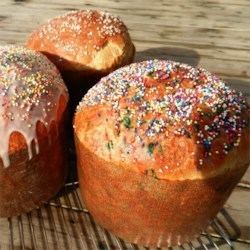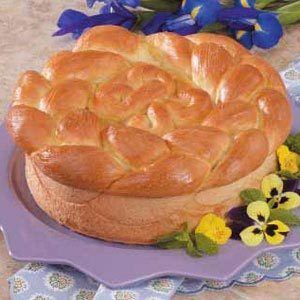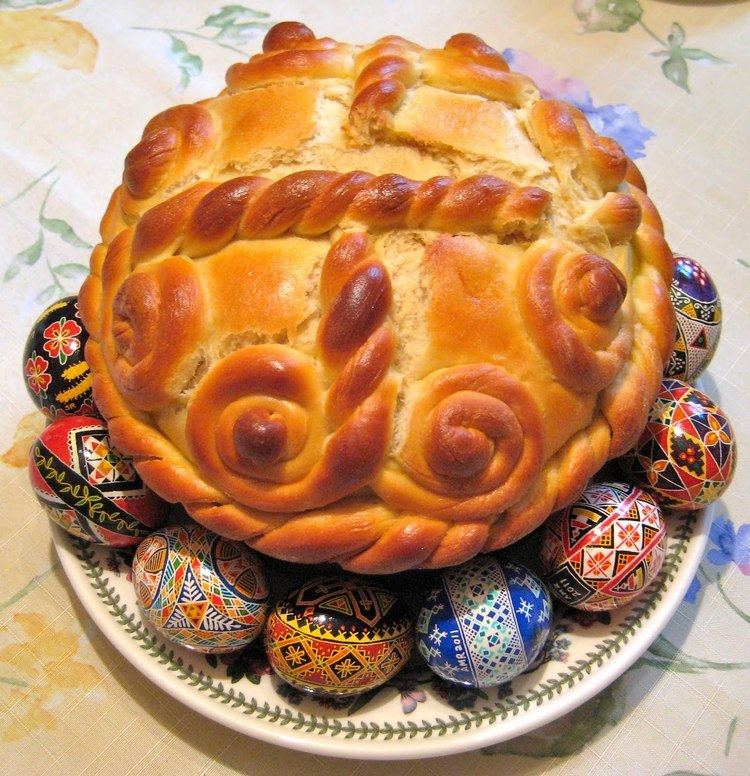Place of origin Ukraine, south Russia | ||
 | ||
Similar | ||
Paska (Ukrainian, Russian Пáска "Easter", ultimately from Aramaic: פסחא "Passover") is an Easter bread eaten in the Assyrian–Chaldean–Syriac diaspora, Eastern European countries including Ukraine, south Russia, Romania, Slovakia, Georgia and parts of Bulgaria. It is also eaten in countries with immigrant populations from Eastern Europe such as the United States, Canada and the United Kingdom.
Contents

Traditional ingredients

Paska is made with milk, butter, eggs, flour, and sugar, except in Romania, where the recipe most commonly includes sweet cream, cottage cheese, and/or sour cream along with eggs, sugar, raisins, and rum. An egg and water mixture is used as a glaze.
Christian symbolism

The Christian faithful in many Eastern Christian countries eat this bread during Easter. Christian symbolism is associated with features of paska type breads. The inside of paska can be a swirl of yellow and white that is said to represent the resurrection of Jesus while the white represents the Holy Spirit. Other versions include chocolate, rice, or even savoury mixtures based on cheese. A version is made with maraschino cherries added to symbolize royal jewels in honor of the resurrection of Jesus.
Eaten with other foods

Paska is eaten with "hrudka", also called syrek, a bland sweet custard similar to cheese made from separated eggs and milk and beets mixed with horseradish (chren/hrin) and kielbasa (in Polish) or kovbasa (in Ukrainian).
Assyrian Paska

In Iran and the diaspora, Assyrians will eat a Paska cake on Easter, Ida Gura. The tall cake is decorated with a cross on top to represent Calvary, the place of Jesus' crucifixion, and surrounded with colored eggs to symbolize the people who visited Jesus during his death and were at his cross.
Pască
Pască is a traditional Romanian pastry. Pască is composed with eggs, sour cream, fresh cheese like urdă, raisins and sugar, and is especially made for Easter. The word Pască come from Latin pascha meaning Easter.
